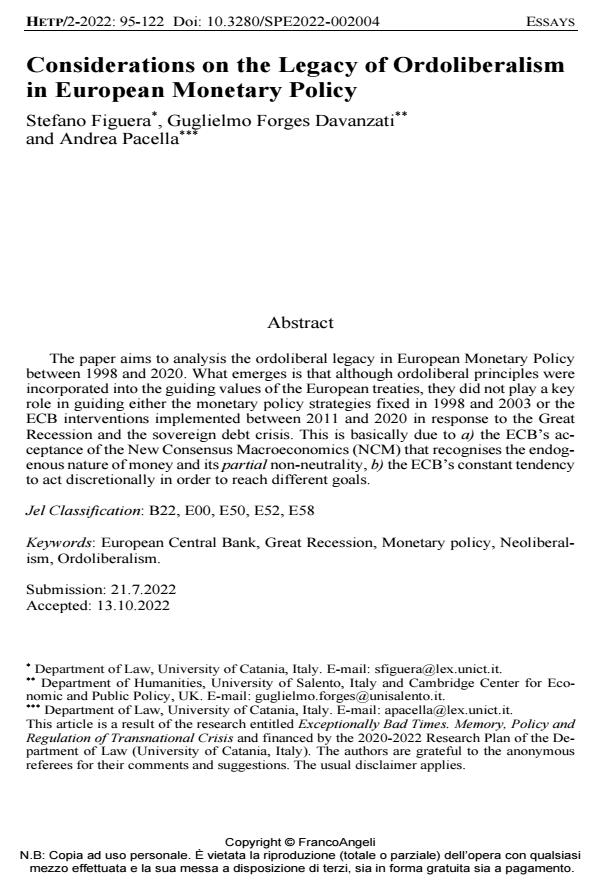Considerations on the Legacy of Ordoliberalism in European Monetary Policy
Titolo Rivista HISTORY OF ECONOMIC THOUGHT AND POLICY
Autori/Curatori Stefano Figuera, Guglielmo Forges Davanzati, Andrea Pacella
Anno di pubblicazione 2022 Fascicolo 2022/2
Lingua Inglese Numero pagine 28 P. 95-122 Dimensione file 147 KB
DOI 10.3280/SPE2022-002004
Il DOI è il codice a barre della proprietà intellettuale: per saperne di più
clicca qui
Qui sotto puoi vedere in anteprima la prima pagina di questo articolo.
Se questo articolo ti interessa, lo puoi acquistare (e scaricare in formato pdf) seguendo le facili indicazioni per acquistare il download credit. Acquista Download Credits per scaricare questo Articolo in formato PDF

FrancoAngeli è membro della Publishers International Linking Association, Inc (PILA)associazione indipendente e non profit per facilitare (attraverso i servizi tecnologici implementati da CrossRef.org) l’accesso degli studiosi ai contenuti digitali nelle pubblicazioni professionali e scientifiche
The paper aims to analysis the ordoliberal legacy in European Monetary Policy between 1998 and 2020. What emerges is that although ordoliberal principles were incorporated into the guiding values of the European treaties, they did not play a key role in guiding either the monetary policy strategies fixed in 1998 and 2003 or the ECB interventions implemented between 2011 and 2020 in response to the Great Recession and the sovereign debt crisis. This is basically due to a) the ECB’s acceptance of the New Consensus Macroeconomics (NCM) that recognises the endogenous nature of money and its partial non-neutrality, b) the ECB’s constant tendency to act discretionally in order to reach different goals.
Parole chiave:European Central Bank, Great Recession, Monetary policy, Neoliberalism, Ordoliberalism.
Jel codes:B22, E00, E50, E52, E58
Stefano Figuera, Guglielmo Forges Davanzati, Andrea Pacella, Considerations on the Legacy of Ordoliberalism in European Monetary Policy in "HISTORY OF ECONOMIC THOUGHT AND POLICY" 2/2022, pp 95-122, DOI: 10.3280/SPE2022-002004